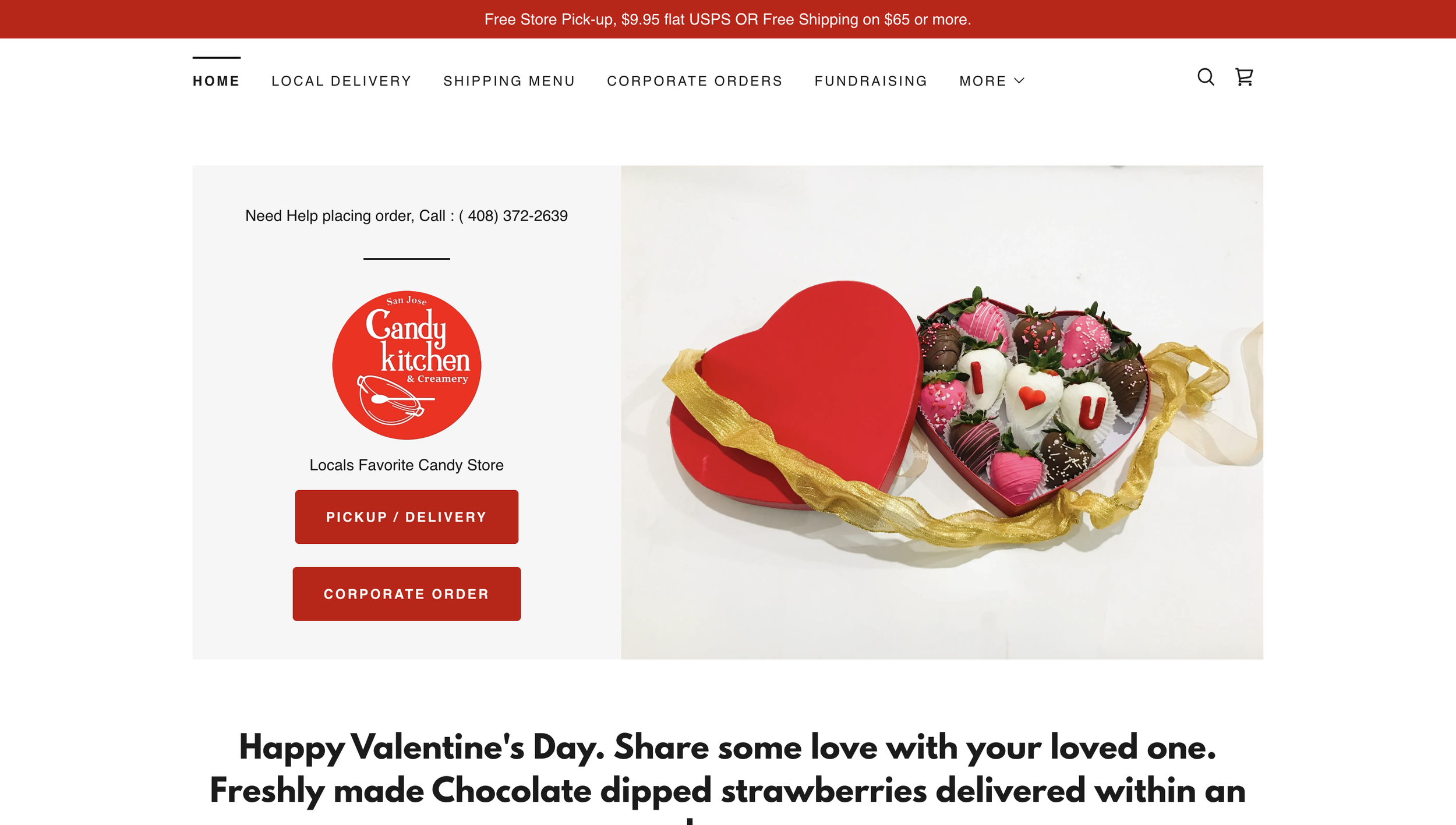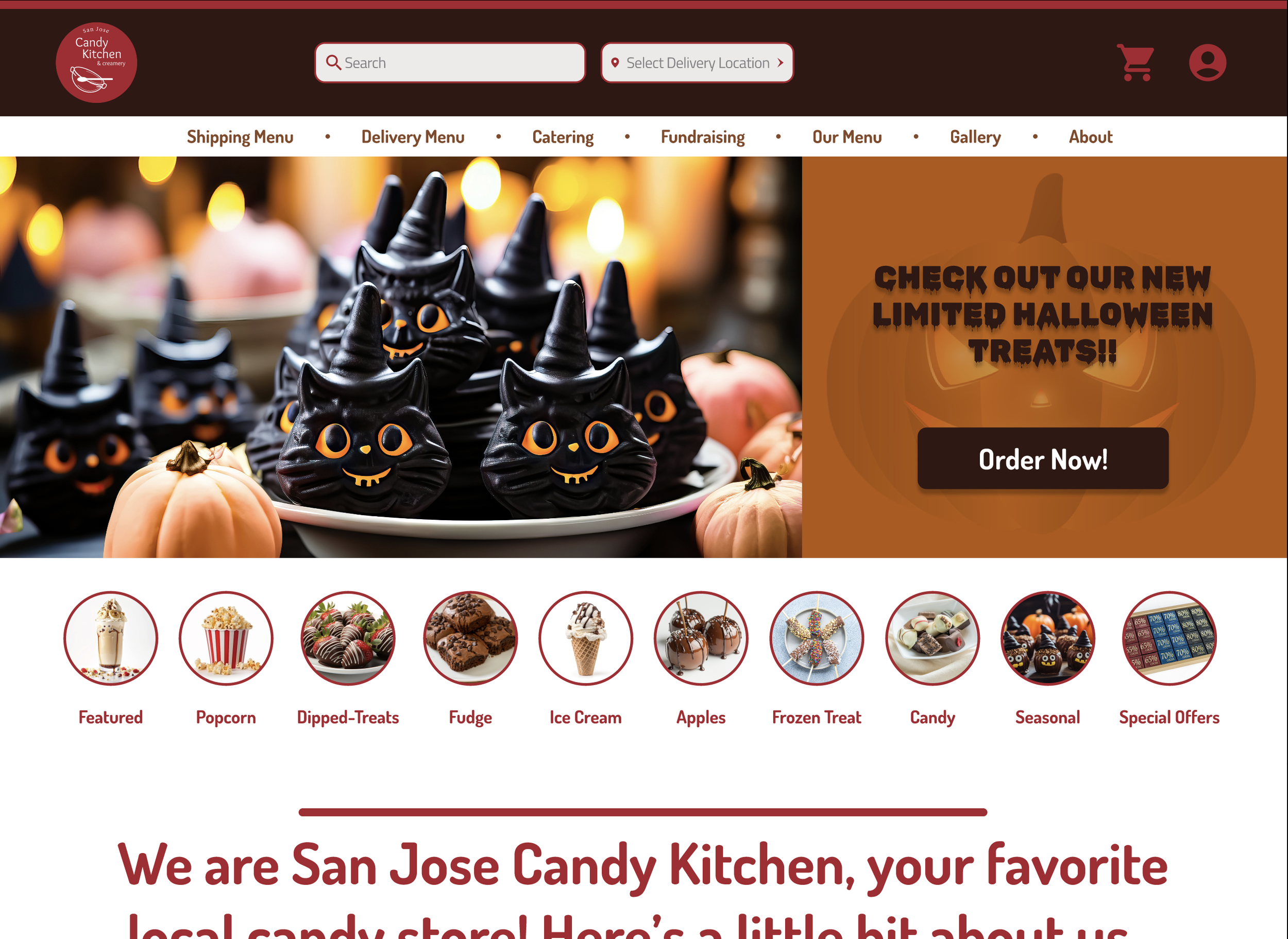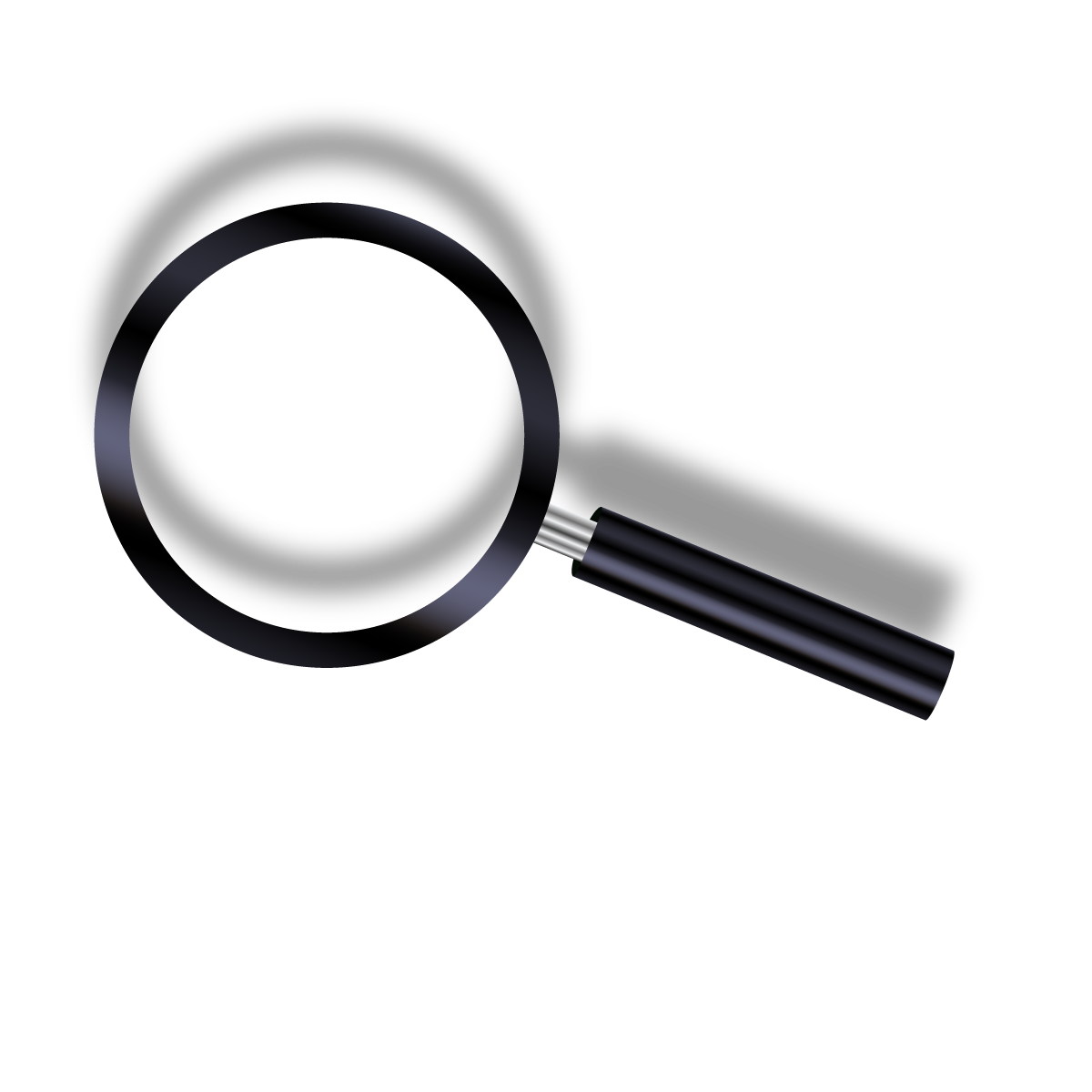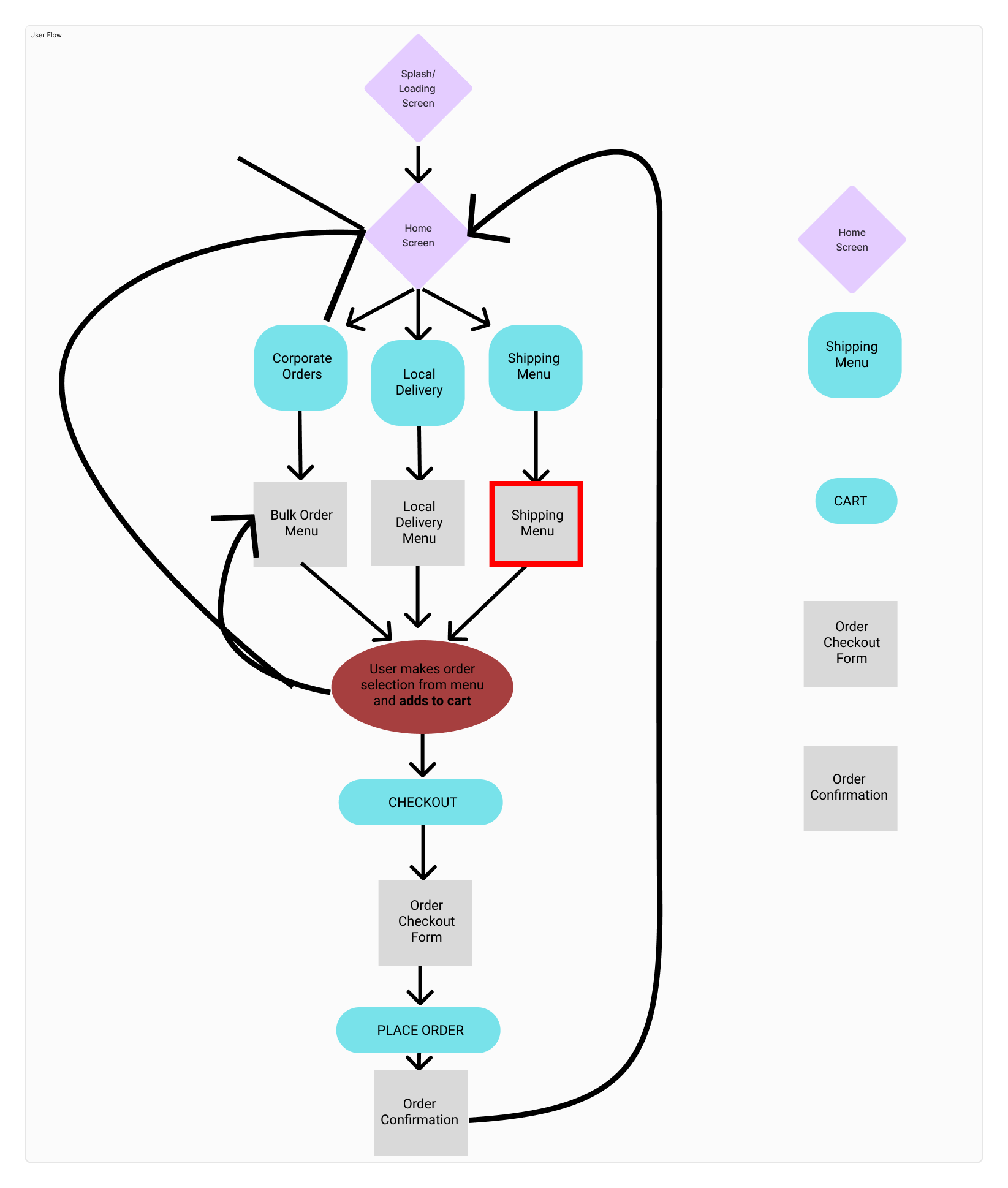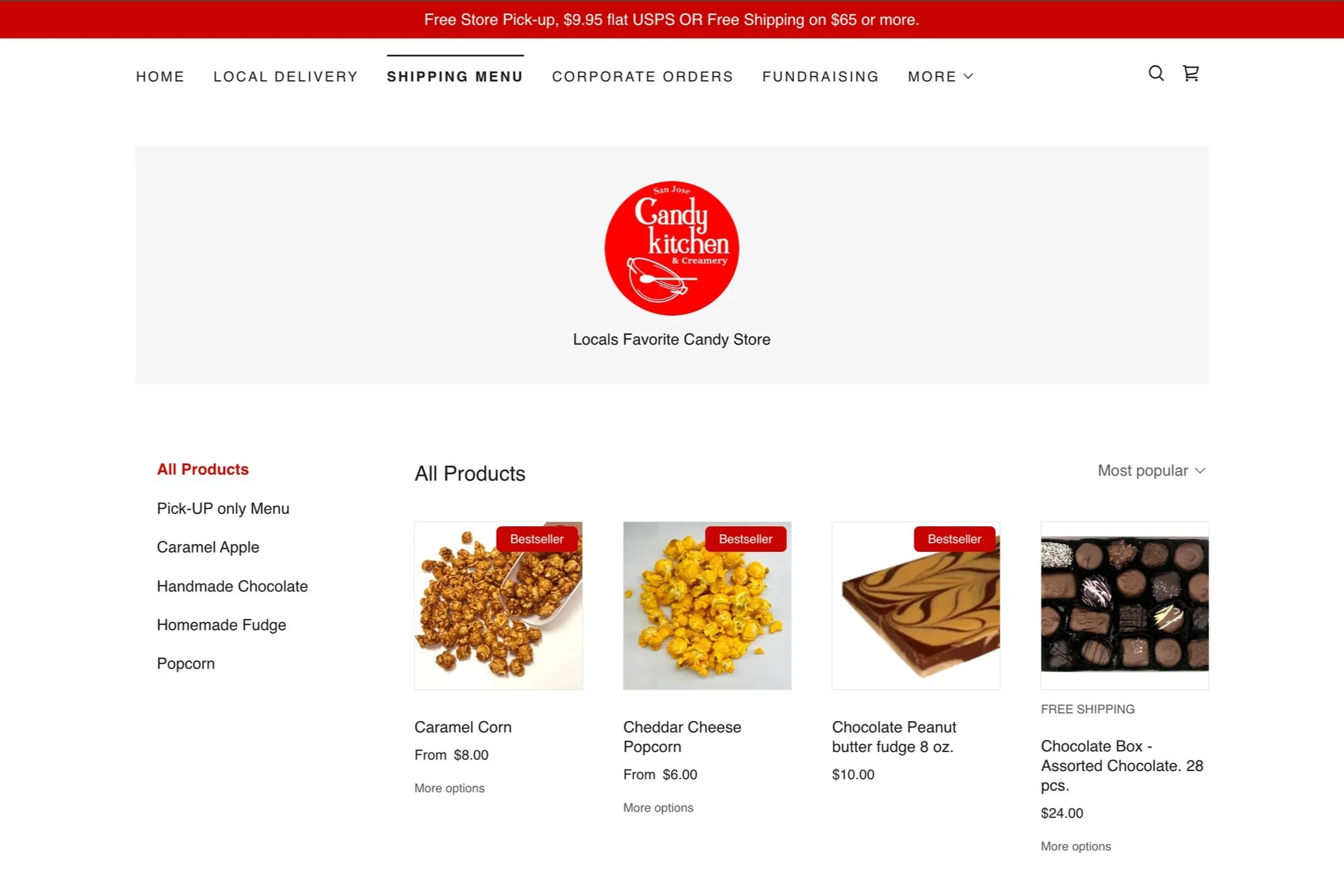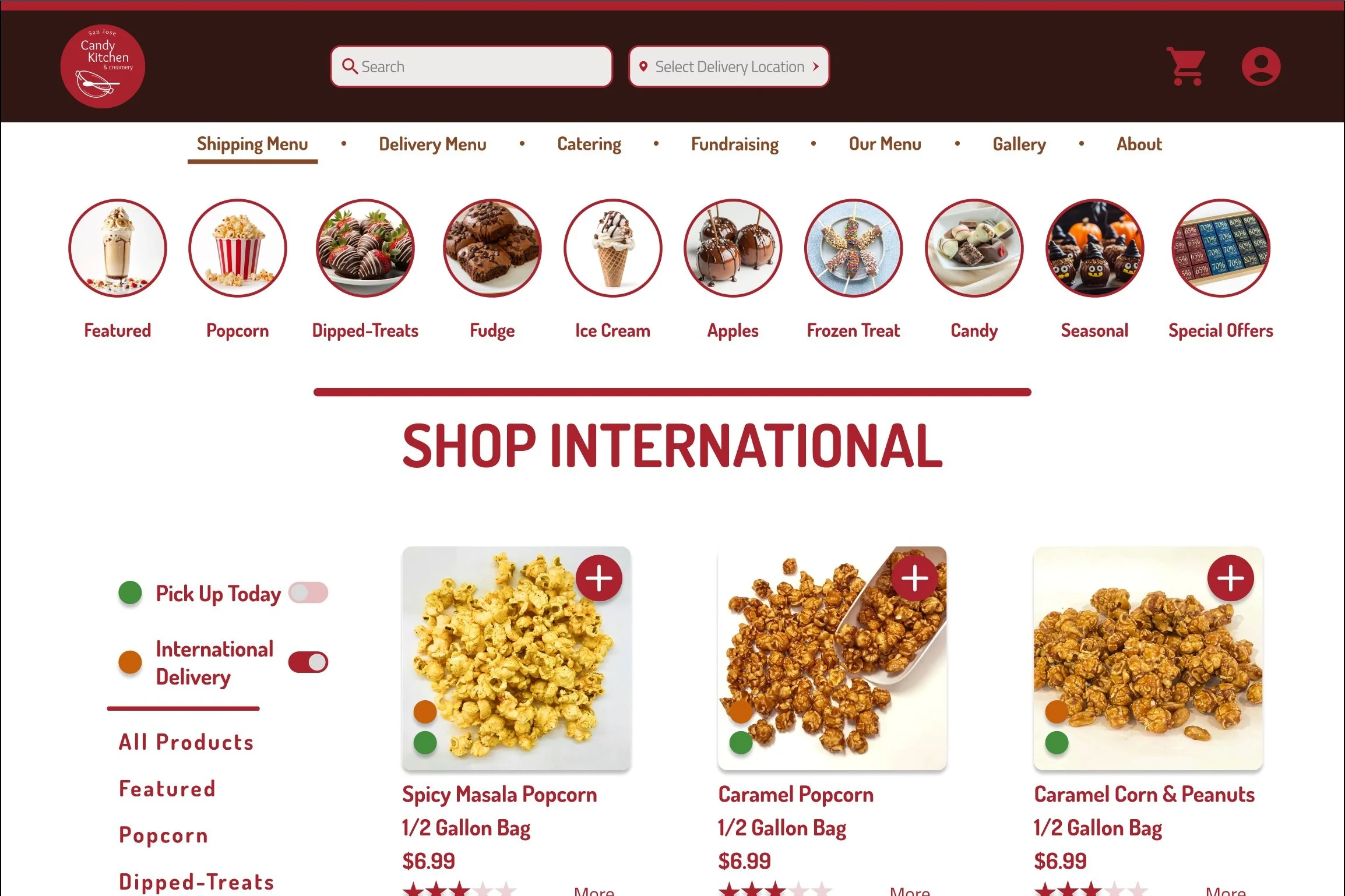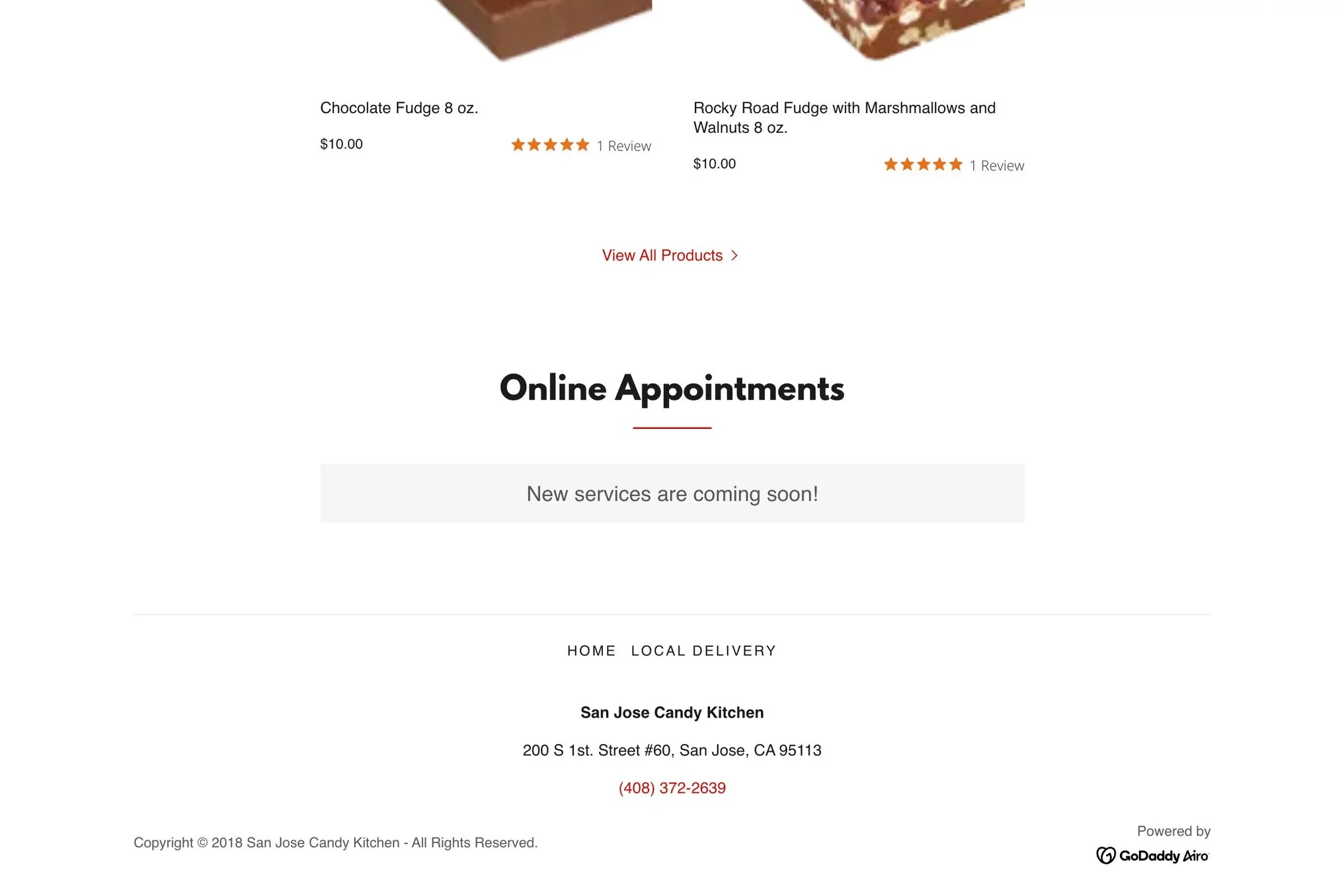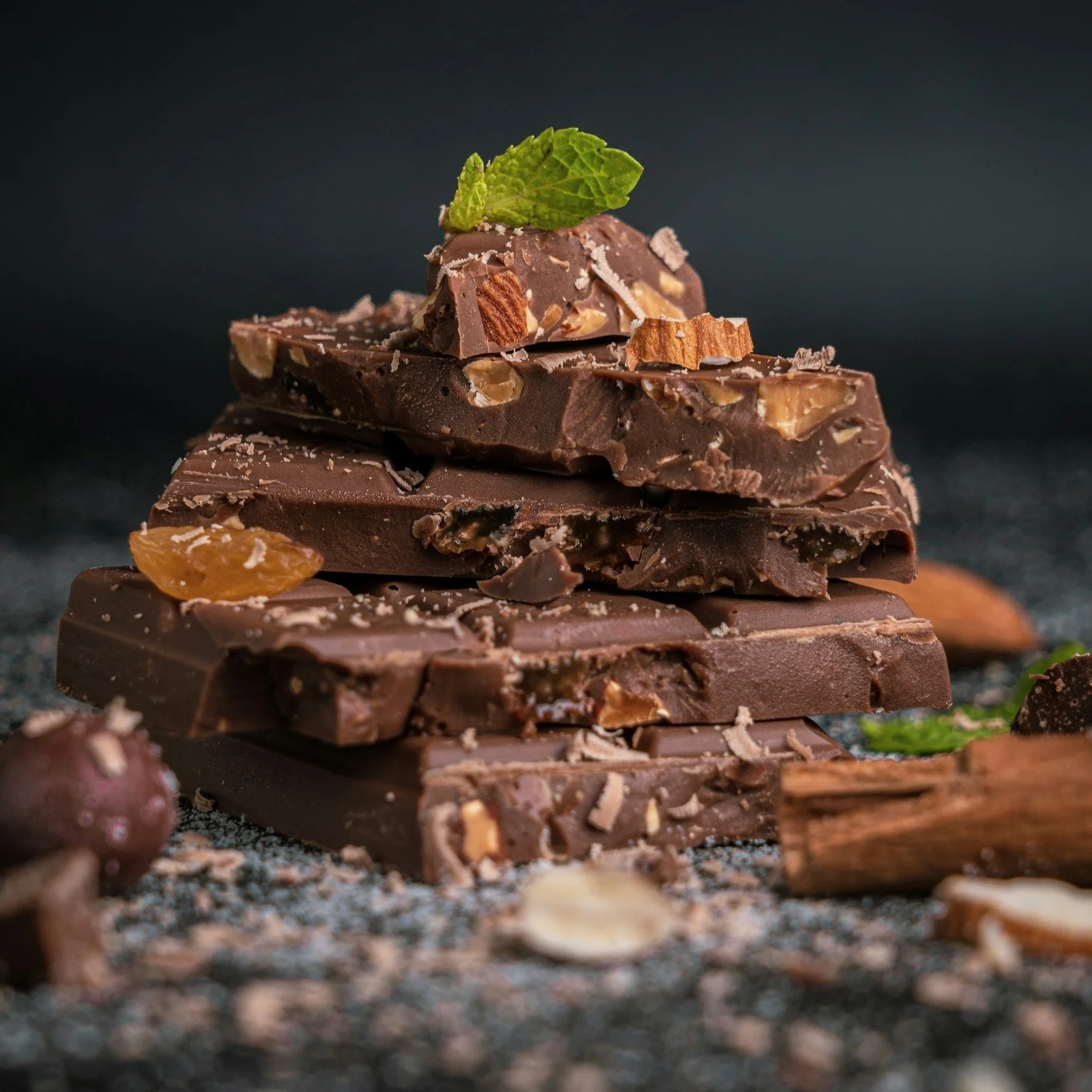
Project San Jose Candy Kitchen: A Sweeter Digital Journey
Capturing the spirit of a local candy shop in a modern web experience.
Oct 2024 - 4 weeks duration
Team size - 3
My Role - User Researcher, UI Designer, Stakeholder Liaison
Project Overview
In October 2024, as part of a UX/UI bootcamp challenge, I was tasked with finding a real small business stakeholder and leading a full website redesign project. I proposed San Jose Candy Kitchen — a charming, family-owned candy shop I had discovered a year earlier in downtown San Jose. Their outdated website presented a clear opportunity to improve usability, showcase their handcrafted confections, and increase business visibility. Over the course of four weeks, our three-person team collaborated closely with the client to deliver a modern, responsive website. I served as the Stakeholder Liaison, contributed to user research, and led the UI design.
My Role & Responsibilities
Acted as the primary Stakeholder Liaison, initiating and maintaining all client communication
Conducted stakeholder interviews to identify business goals and user pain points
Collaborated on user research activities, including competitor analysis, user personas, journey mapping and empathy mapping
Created user flows with the team and used them for wire-framing and design decisions
Led the design process by creating mid-fidelity wireframes and responsive high-fidelity prototypes for both desktop and mobile
Participated in usability testing and user feedback sessions to validate and iterate on design solutions
User struggles with confusing navigation, tedious sign-up processes, and unengaging visuals when shopping for sweets online. These usability issues create frustration and reduce their likelihood of returning, highlighting the need for a more intuitive and enjoyable shopping experience.
Problem Statement
If you’re short on time, here’s a quick glimpse at the sweet upgrades from our redesign. Below, you’ll find before and after screenshots showcasing the transformation. We’ve made it easier and more exciting than ever to browse, shop, and discover new features, including smoother navigation and a spotlight on seasonal and holiday candy availability. Ready to see the magic? Click here to jump straight to the final designs and results.
Final Result
Before
After
Research & Planning
We began our discovery phase with a simple question: how do people shop for sweets online? To answer that, we surveyed 50 individuals and uncovered several surprising insights. A strong majority — 84.6% — preferred ordering directly from a business’s website, bypassing third-party platforms like Etsy or DoorDash. This confirmed the stakeholder’s concern that his existing website was underperforming and missing opportunities to engage directly with customers.
To go deeper, we conducted user interviews. That’s where the real story came to life.
Key Findings from User Interviews
User interviews illuminated what truly matters to customers when shopping for sweets online. One participant remarked, “A poor website layout is a red flag for me,” reinforcing how much trust hinges on a clean, intuitive design. Another shared, “Imagery is vital,” pointing to the powerful emotional connection sparked by high-quality, authentic visuals.
We also uncovered clear, recurring expectations:
Users depend heavily on reviews to decide what to buy.
They want transparent and timely order updates.
They expect a seamless, user-friendly experience that reflects the quality and care of the product.
These insights became the foundation of our design strategy. Every decision, from layout structure to visual hierarchy, aimed to earn user trust, showcase the brand’s unique charm, and make ordering feel effortless and enjoyable.
User Persona
After conducting interviews and analysing user insights, we created a user persona that captured the core needs and behaviours of our target audience.
Tanya Shah, our primary persona, guided key decisions throughout the website redesign. Her goals and frustrations helped us stay focused on creating a more engaging and user-friendly experience that aligned with real user expectations.
Empathy Map
To further deepen our understanding of our users, we created an empathy map based on insights gathered from the survey, interviews, and key findings. Focusing on Tanya, our primary user persona, this map helped us visualize what she is thinking, feeling, saying, and doing during her experience with online sweet shopping platforms. By mapping her emotional and behavioral patterns, we identified core pain points and motivations, which ultimately led us to define our problem statement and focus our design efforts around real user needs.
User Flow
We streamlined the current task flow to enhance usability and make it more intuitive and user-friendly. By simplifying key interactions, we aimed to help users navigate the purchasing process with greater ease, resulting in a smoother and more efficient overall experience.
Insights from Stakeholder
During the stakeholder interview, I discovered that the existing website was receiving little to no traffic, with most orders coming through third-party platforms like Etsy and DoorDash. The stakeholder expressed a strong interest in building a more direct connection with customers. I proposed that my team design a new, user-centred website to help drive more organic traffic and reduce over-reliance on external platforms. This approach would support a more independent online presence while still allowing the business to benefit from its existing partnerships.
Design Evolution
After understanding the problem, our team created initial sketches to map out key interactions and identify the ideal journey for our users. With the help of the user flow developed by the team, I took the lead in developing the mid-fidelity wireframes. This phase allowed me to refine the layout, structure, and functionality, ensuring our design addressed user pain points and aligned with both user needs and project goals.
We wanted to introduce a fresh and approachable solution to improve product discovery on the website. Instead of using a traditional scroll-down format for categories, one of my teammates proposed showcasing them directly on the homepage. I immediately brought this idea to life in the mid-fidelity wireframes, designing a clean, interactive layout. To enhance clarity and engagement, I incorporated subtle hover effects for each category, making the experience more intuitive and visually appealing.
Initial Mid-fi wireframe
Final Mid-fi wireframe after iteration
To validate the effectiveness of this feature, we conducted a usability test, asking users whether this categorized layout helped them find products faster. The feedback was overwhelmingly positive; users found the section intuitive, easy to navigate, and appreciated the quick access to product types without excessive scrolling.
High Fidelity Wireframe
Once we were satisfied with the mid-fidelity wireframes and had integrated user feedback, we transitioned to developing the high-fidelity designs. As a team of three, we divided responsibilities: one teammate focused on creating the style guide and mood board, another conducted usability tests to validate our design decisions and helped me in designing the pages, and I took the lead in designing the main website pages as well as the complete set of mobile wireframes.
We continuously conducted and relied on usability tests to keep our work highly user focused. These insights allowed us to iterate on the high fidelity designs based on our users’ needs and feedback, ensuring the final product was both intuitive and effective. You can see the difference in the images below, which compare the original website to our redesigned version, highlighting improvements in layout, clarity, and overall user experience.
Before
Original Website Homepage
Homepage
After
Redesigned Homepage
Original Website Shipping Menu
Shipping Menu
Redesigned Shipping Menu
Original Website Footer Menu
Footer Menu
Redesigned Footer Menu
What to expect from the Redesigned Website
Enhanced Color Theme: Updated to align with the brand's identity.
New Typography: Improved readability and visual appeal.
Visually Appealing Navigation Menu: Redesigned for an attractive look.
Intuitive Navigation Menu: Easy to use for a seamless experience.
Streamlined Shopping Flow: Simplified process for effortless purchasing.
Future Enhancements
Allow customers to customize the ingredients in their orders.
Provide real-time status updates for international orders.
Implement an icon or image search feature for easier product discovery.
Develop points and benefits for repeat customers.
Launch a special discount on Turtle Tuesdays to encourage sales.
Present our work to the stakeholder and enjoy some almond turtles and chocolate-dipped strawberries from San Jose Candy Kitchen.
Key Takeaways
This project was a true exercise in teamwork and adaptability. I'm especially proud of how smoothly our team collaborated. We respected each other's roles, welcomed feedback without hesitation, and worked in sync without interfering with one another. Despite a tight timeline and the challenge of completely rebuilding the website, we stayed focused, divided tasks effectively, and made thoughtful design decisions that were always guided by user needs.
Through this process, I improved my ability to build and reuse components efficiently, gained confidence using design systems, and learned new ways to organize and streamline design files for clarity and consistency. It reminded me how essential clear communication, trust, and adaptability are in team projects, especially when working under pressure. I also saw how important it is to test early and often since user feedback consistently brought new insights that shaped our direction.
Going forward, I’m excited to further sharpen my prototyping skills and strengthen my user research practice by creating more opportunities for meaningful conversations with users early in the design process. I want to better understand the reasons behind their behaviors and needs so I can design more empathetic, inclusive, and intuitive experiences. This project reaffirmed my passion for designing with people rather than just for them, and I look forward to applying these lessons in future projects.
I would like to extend my heartfelt thanks to everyone who contributed to this project.
To my amazing team members, thank you for your collaboration, creativity, and support throughout each stage of the design process. Your insights and teamwork made this experience both productive and rewarding.
To my bootcamp mentors, I am deeply grateful for your guidance, expertise, and encouragement. Your feedback helped me grow as a designer and approach challenges with confidence and curiosity.
To stakeholder Ajay Patel, thank you for your valuable input, direction, and thoughtful feedback, which were crucial in shaping the vision and success of this project.
To all the users who participated in interviews, surveys, and testing sessions, thank you for generously sharing your time and perspectives. Your input was invaluable in creating user-centered solutions and driving meaningful design decisions.
This project would not have been possible without each of you.

